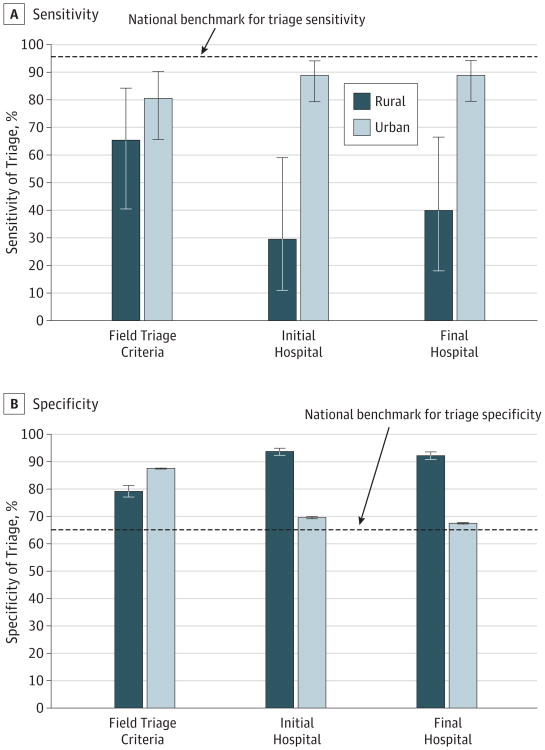Figure 1. Diagnostic Accuracy of the Triage Process (Field Identification, Initial Hospital Selection, Final Hospital Destination) for Identifying Trauma Patients Requiring Early Critical Resources in Rural (n = 1438) vs Urban (n =16195) Regions, Sensitivity (A) and specificity (B) results shown.
Triage sensitivity estimates for patients with an Injury Severity Score of 16 or higher (indicating serious injuries; range, 0-75, with higher numbers indicating greater injury severity) injured in rural regions were included in the parent study publication.16 Early critical resource need was defined as any of the following within 24 hours of arrival at the emergency department: emergent intubation in the emergency department, major nonorthopedic surgery (brain, spine, neck, thorax, abdominal-pelvic, or vascular surgery), interventional radiologic procedures, packed red blood cell transfusion of 6 U or more or any transfusion in a child, or death. Error bars indicate 95% CI.

